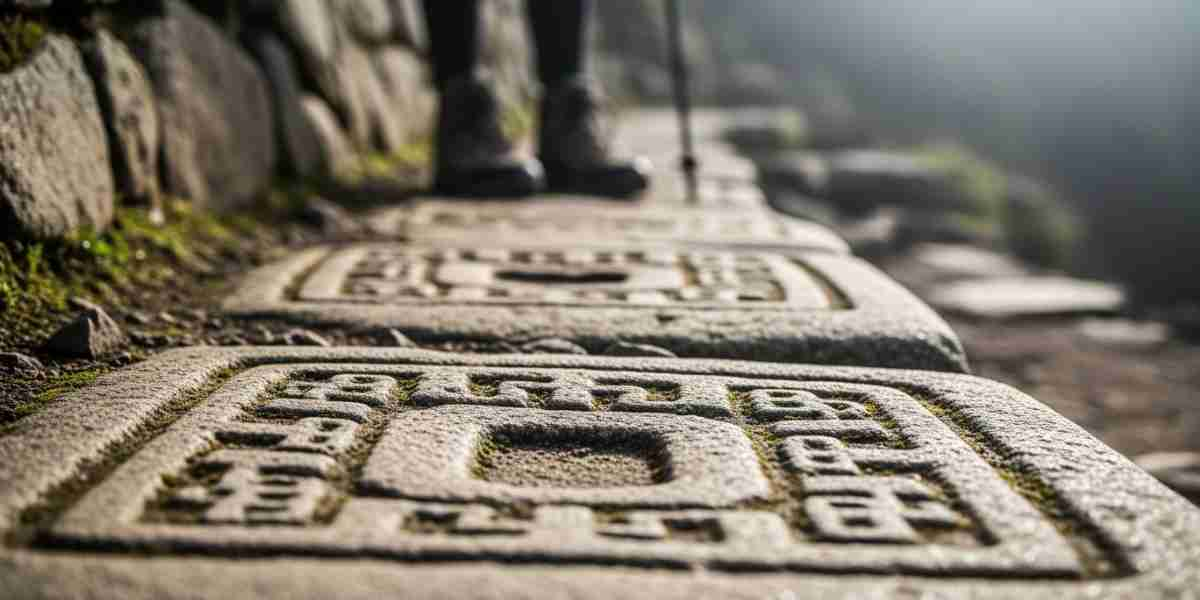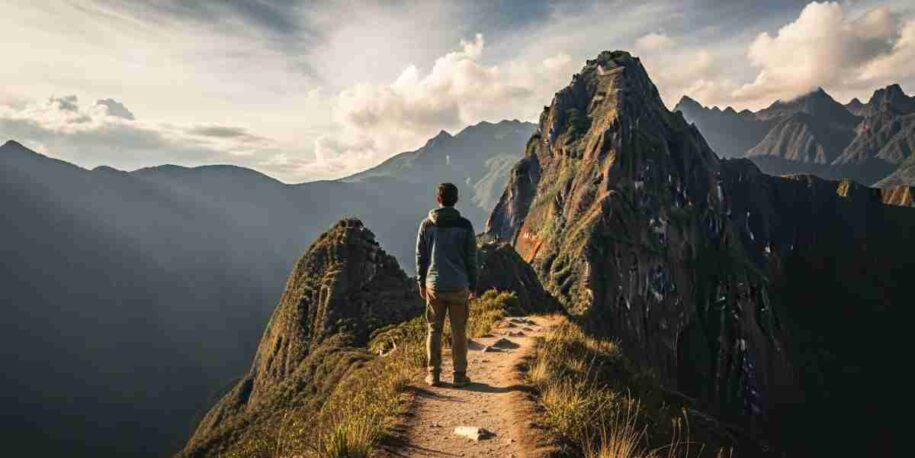There’s a well-worn path in the traveler’s imagination that leads directly to Peru. It’s paved with images of sun-drenched Inca ruins, the iconic silhouette of Machu Picchu against the clouds, and the lingering mystique of a civilization lost to time. We are drawn by a powerful desire to witness history, to walk through a world of stone and story, to touch the past. But here is a secret that only the Andes will whisper to you after you’ve arrived: the most profound journey you take in Peru isn’t into the past. It’s a head-on collision with your present.
This is the great, beautiful paradox of a Peruvian adventure. You book a flight to see what remains of the Incas, but what you truly discover is what remains of yourself when everything else is stripped away. The real challenge isn’t just navigating ancient stone steps; it’s navigating the landscape of your own life, right here, right now. To travel here is to accept an invitation to confront your present in Peru, with the mountains as your witness.
The Allure of the Ancient World: Why We Choose Peru
Let’s be honest. The initial pull is the history. It’s the genius of Inca engineering, the spiritual weight of Cusco’s cobblestone streets, and the promise of standing at the Sun Gate after a multi-day trek. We are, by nature, seekers of stories greater than our own. And Peru offers one of the greatest stories ever told—a narrative of empire, cosmology, conquest, and resilience etched into the very bones of the earth.
This desire to connect with an epic past is valid and vital. It’s what separates a traveler from a tourist. You don’t just want to see a postcard; you want to feel the chill of the mountain air where Inca priests once stood. You want to understand what drove a people to build a citadel in the clouds. This is the starting point, the door through which we must all walk.
The Trail as a Mirror: Stripping Away the Noise
The magic happens when the journey truly begins. Whether on the stone paths of the Classic Inca Trail or in the formidable shadow of the sacred peaks on the Salkantay Trek, the Andes demand your full attention. The constant notifications, the endless to-do lists, the low-grade hum of professional and personal anxieties—they all fade. They are replaced by something more immediate, more real.
The Physical Test and the Mental Echo
Trekking at altitude is a humbling experience. Each step is an effort. Each breath is intentional. Your body is occupied with the simple, primal task of moving forward and upward. And in that physical exertion, a profound mental silence begins to descend. The inner monologue that governs our daily lives—the worries about yesterday, the plans for tomorrow—loses its volume. You’re too busy focusing on your footing, on the rhythm of your breathing, on the encouragement of your guide.
This physical challenge becomes a moving meditation. You start to notice things. Not just the wild orchids hiding beside the trail, but the patterns of your own thoughts. Which anxieties persist even when you’re a thousand miles from their source? What strengths do you discover in yourself when faced with a steep ascent? The trail becomes a mirror, reflecting your own resilience, your own limitations, and your own capacity for wonder.
✨ An Expert’s Perspective
«I’ve guided hundreds of travelers through these mountains. They arrive as lawyers, doctors, artists, parents—defined by their roles back home. But after a few days on the trail, those labels dissolve. I see them not for what they do, but for who they are in that moment: determined, vulnerable, and completely, authentically present. The mountain doesn’t care about your job title; it asks only for your respect and your strength. The transformation is remarkable.»
Digital Detox, Spiritual Reconnection
For days at a time, there is no Wi-Fi. No cell service. This involuntary digital detox is one of the most potent gifts of a Peruvian trek. Without the screen as a buffer, you are forced to connect—with the people hiking alongside you, with your Peruvian guides and porters, and most importantly, with the world around you. You look up, not down.
You begin to understand the concept of Pachamama (Mother Earth) not as an abstract idea, but as a felt reality. You feel the sun on your skin, the wind carrying the scent of wild muña, the solid ground beneath your boots. This is the essence of a mindful travel Andes experience. It’s a reconnection to the fundamental elements of existence, a potent antidote to the disembodied nature of modern life.
The Wisdom of the Andes: Lessons in Presence
The Andes Mountains are more than a geological feature; they are Apus, sacred spirits in Inca philosophy. Standing in their presence offers a powerful lesson in perspective. The sheer scale of the landscape—the jagged peaks tearing at the sky, the valleys plunging into shadow—has a way of putting our human concerns into their proper context. The argument you had last week, the project deadline stressing you out… they all seem impossibly small when viewed from 13,000 feet.
This shift in perspective is a core component of transformative travel in Peru. It’s not about escaping your problems; it’s about seeing them from a vantage point so high that they lose their power over you.
🛡️ Safety as the Foundation for Introspection
This profound internal work is only possible when you feel completely safe and supported. True peace of mind isn’t a luxury; it’s a prerequisite for self-reflection. When you don’t have to worry about the logistics of permits, the quality of your gear, the safety of your food, or what happens if the altitude affects you, you are free to focus on your journey. Knowing that an expert team is managing every detail, from oxygen tanks to emergency protocols, creates the secure container necessary for personal growth. This is the peace of mind we are committed to providing, because we know your real work is internal. You can learn more about our unwavering commitment to safety on the trail and see how it enables a deeper experience.

How to Prepare for a Journey Inward on the Inca Trail Spiritual Journey
If you feel the call to not just see Peru, but to experience it, you can prepare your mind as you prepare your body. The decision to confront your present in Peru is a powerful one, and you can make the most of it.
✅ A Practical Checklist for Mindful Travel
- Set an Intention: Before you leave, ask yourself: What am I seeking? What question do I hope the mountains will help me answer? It doesn’t have to be monumental. It could be as simple as «I want to feel more grateful» or «I want to trust my own strength.»
- Pack a Journal: Dedicate a few minutes each evening in your tent to write. Don’t censor yourself. Jot down feelings, sensory details, frustrations, and moments of awe. You’ll be amazed at what emerges.
- Engage with Your Guides: Our guides are not just walking encyclopedias of Inca history. They are keepers of local wisdom, culture, and perspective. Ask them about the meanings of the mountains, their relationship with the land, and their own life stories.
- Practice Gratitude: At the end of each day, consciously acknowledge the work of your porters and cook. Acknowledge the strength of your own body. Acknowledge the beauty of the landscape. This simple practice rewires your brain for joy. The psychological benefits of gratitude and time in nature are well-documented and profoundly amplified in the Andes.
Ready to Answer the Call?
A journey to Peru is an investment, not just in a vacation, but in yourself. It’s a rare opportunity to step outside the relentless forward march of time and simply be. To listen to the wind, to feel the effort of your own heartbeat, and to see your life with the clarity that only distance and perspective can provide.
If you’re ready to move beyond the postcards and embark on a journey that will challenge and change you, we’re here to manage every single detail with the care and expertise your adventure deserves. Let’s start the conversation about your own transformative journey.
Begin planning your journey with our Peru travel specialists today.

